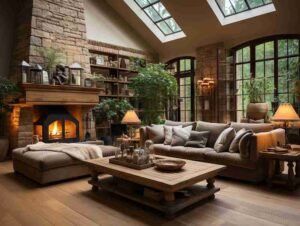Source Image
During home renovation, opting for sustainable materials can have pronounced effects not only on the environment but also on energy efficiency and long-term costs. Increasingly stringent regulations and consumer demand for eco-friendly solutions are spotlighting the importance of green building materials. Here, the case for such resources is clear: choosing sustainably sourced materials is not merely a trend—it’s an imperative for responsible living.
Waste Not, Want Not
Construction waste contributes significantly to landfill volumes worldwide. By prioritizing materials that either reduce waste or can be recycled, homeowners can play a significant role in minimizing this heavy footprint. Reclaimed wood, recycled metal, and glass, as well as eco-friendly bricks, are top contenders in reducing waste without compromising style or durability. The more these materials are utilized, the less demand there is for production methods that exhaust resources and produce pollutants.
An added benefit of using recycled materials is the unique character they bring to each project. Every piece of reclaimed wood or salvaged metal has a story, imparting a sense of history and individuality to a renovation. These materials often come with a weathered charm that artificial finishes strive to mimic. Thus, opting for salvaged resources not only helps combat environmental issues but also introduces an authentic aesthetic appeal, which is hard to replicate with new materials.
Even in interior upgrades, embracing sustainability can be seamless and stylish. Consider incorporating beautiful custom countertops made from environmentally durable materials. These options can blend aesthetic charm with practical benefits, often featuring recycled components or materials that uphold eco-friendly standards.
Energy and Emissions
The production of traditional building materials is often energy-intensive, raising both emissions and costs. Bamboo, cork, and linoleum, on the other hand, grow quickly and require minimal energy for processing. Their renewal cycle is much shorter compared to hardwood trees, reducing carbon emissions. Insulating materials such as sheep’s wool and cellulose also offer significant energy savings, as they help maintain indoor temperatures, thereby lowering heating and cooling costs.
Another exciting avenue for eco-friendly energy savings is solar roofing tiles and panels. These dual-purpose products provide protection from the elements while generating clean energy. Over time, the energy produced can significantly lower electricity bills, promote household energy independence, and reduce the reliance on fossil fuels, aligning perfectly with a sustainable renovation ethos.
The Health Advantage
Typical construction materials may emit volatile organic compounds (VOCs) and toxins that affect indoor air quality. Choose options like low-VOC paints and finishes as a healthier, eco-friendly alternative. Materials such as clay plaster and natural stone stand out for their aesthetic and functional benefits while improving indoor air quality by not releasing harmful chemicals.
Introducing more daylight into living spaces can also enhance health and well-being. Opt for skylights or larger windows made from high-performance glass to fill rooms with natural light. Enhanced natural light exposure has been linked to improved mood and increased productivity, creating a more pleasant and healthy living environment.
The Economics of Sustainability
While some sustainable materials may come with a higher upfront cost, the economic benefits are clear in the long run. Lower energy bills, enhanced durability, and increased home value often offset initial expenditures. Unlike their conventional counterparts, green materials are designed to last, reducing the need for frequent replacements.
It’s important to consider any available financial incentives or rebates for sustainable renovations. Governments and local councils increasingly offer tax credits, grants, or low-interest loans to encourage the adoption of eco-friendly practices. These incentives can substantially lower upfront costs, making sustainable renovations more accessible for homeowners.
Local and Bioregional Options
Importing materials adds costs and emissions through transportation. Local materials, conversely, capitalize on regional climate and resources, offering both environmental and economic benefits. By promoting local industries, homeowners foster community growth, which further incentivizes the production of eco-friendly materials.
The Road Ahead
The demand for sustainable building materials is waxing, as is the appetite for legislation mandating their use. For homeowners, there is both opportunity and obligation. Choosing sustainable materials for renovation is a step in the right direction—one that benefits more than just the aesthetics of a home. A vibrant, sustainable future depends on choices made today. Be opinionated; be resolute; the case for sustainable home renovation materials has never been stronger.






